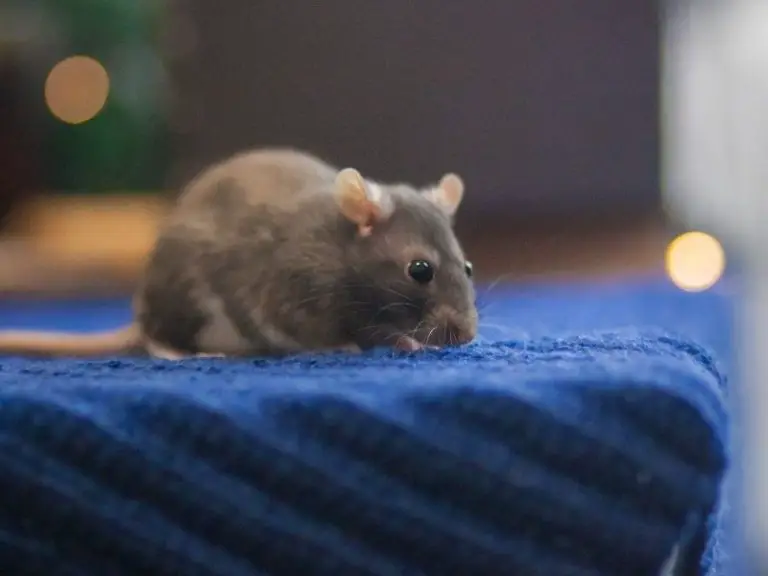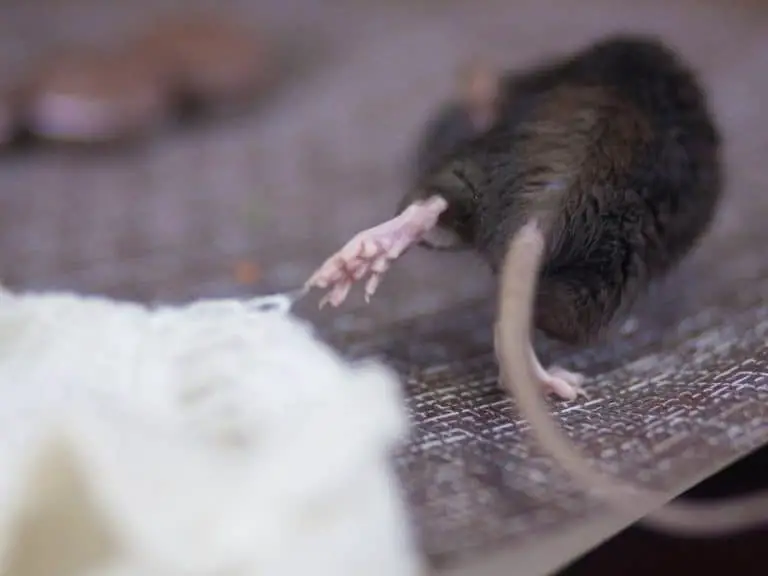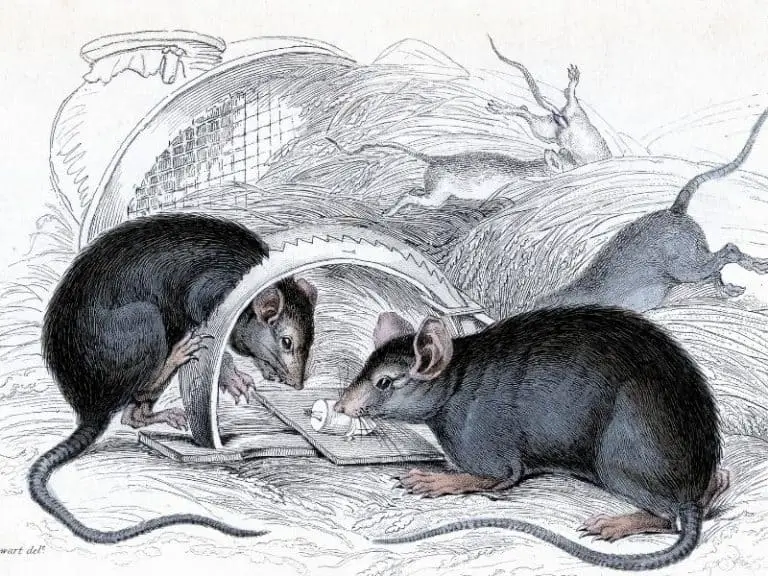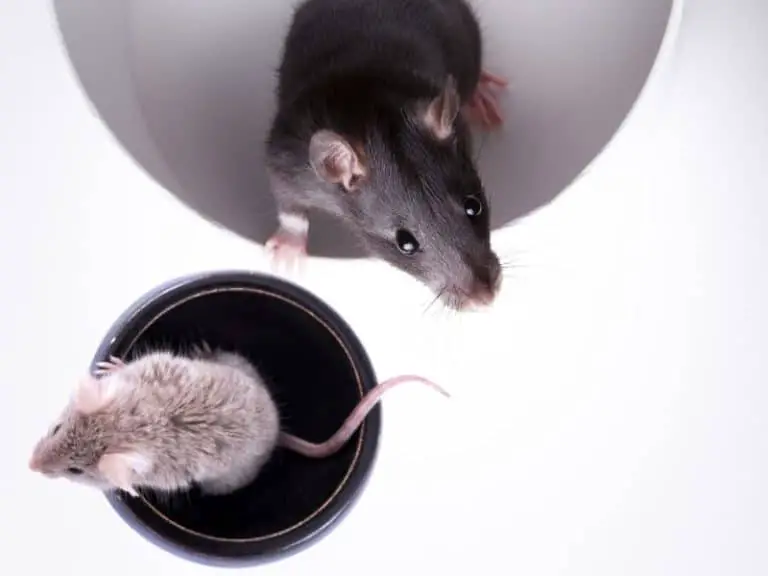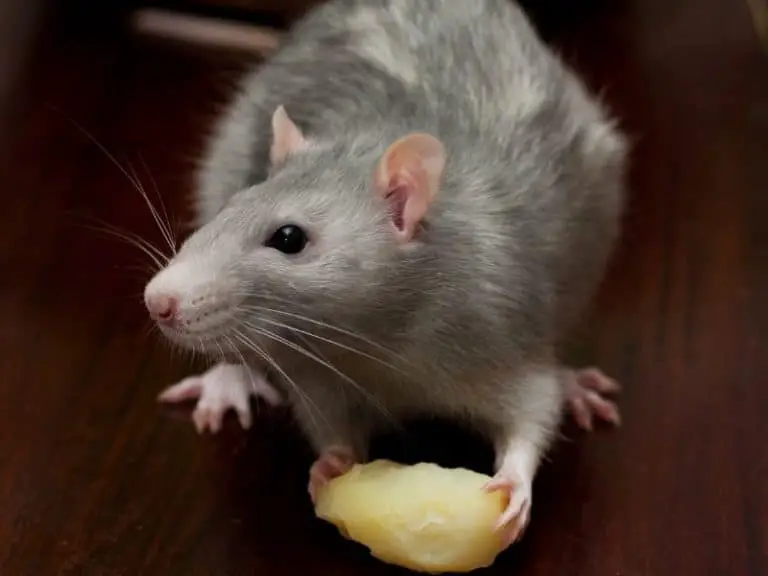8 Real Reasons Why Rats Can Come to Your House
A rat infestation is something that can cause damage to your house, leave a mess, and sometimes cause disease. What causes rats to come into your home, and property may be the key to prevention.
Rats can come into your house and property for three main reasons: food, water, and shelter. Giving them a reason not to find any of these is the key to preventing a rat infestation. Rats take advantage of what a house can offer to seek a place to stay and breed.
In fact, we can think of at least eight reasons rats can come to a house. These reasons come with corresponding ways to ensure that they don’t have an excuse to be in your home. Learn these tips and find out how to get rats out of your house.
What Causes Rats To Come In Your House
There are reasons rats can come into your house, but they can all be explained by this idea: rats need to thrive. In order to thrive, they need food, water, and shelter.
Rats are attracted to anything that gives them any of these. We list them below:
Rats Need a Place to Nest

Rats need shelter because they can breed and thrive. Rats breed very rapidly.
For example, the roof rat, which is one of the most common types of rat, breeds at the rate of 8 litters a year, with around 6-8 pups per litter. Chances are, if I found a rat in my house, there may be more that are breeding.
Where do rats commonly nest? The Norway rat commonly nests in underground burrows, but roof rats are not too picky. They can nest anywhere from wall gaps to attics to trees.
Rats can potentially nest in different places, including boxes, piles of leaves, and other places where they can find shelter.
You could tell that you have a rat’s nest by debris left behind, such as shredded cardboard in boxes, for example. Droppings and tracks are another tell-tale sign.
Rats try to build nests by burrowing through material such as wood or other organic material. If I saw one rat, there is likely to be more, especially if it is a young, smaller one.
The way to prevent them from nesting is to prevent them from entering houses to lay their young.
Covering holes and cracks and rat-proofing other house openings with traps are an important key to keeping them away.
However, if you suspect that there is a rat nest, call a professional to find out if your hunch is right.
Rats Need Shelter From the Cold
What causes rats to come into your house is exactly why you would stay at home at certain times of the year: warmth and comfort.
Rat infestations are most likely to happen during fall or even late summer when temperatures drop significantly. This means that rats would be desperate to visit any place that helps them prepare for winter.
Rats have very keen senses and can notice if there is warmth emanating from a house or shelter.
They take advantage of homes with good central heating systems, especially if the pipes lie behind walls where they can take shelter and nest. It is also likely that they may burrow near houses where radiant heat comes from the walls.
Another reason rats need shelter from falling temperatures is that they can get to be as active as they can be around your house.
They can easily scavenge for food and store them in their nests or burrows, whether behind a wall or in a house plant. Rats would prefer to stay sheltered indoors rather than run outside during the winter.
We do not advise cutting off heating to prevent rats from being attracted to your house. As we will mention below, the key is to cut off points of entry where rats can find a way to shelter and warmth.
Traps and other rat-proofing measures may be necessary for places where rats might enter, such as near fireplaces and chimneys.
Rats Need Food and They Can Eat Anything
Another reason that rats come into your house is food. Rats, like many rodents, tend to be scavengers, so they survive by thriving on food that is left unattended.
In the outdoors, they are likely to eat from fruit and nut-bearing trees, but once inside, they might find themselves with an abundance of food sources.
Rats have a good sense of smell and can detect food from a distance. They are likely to find all sorts of ways to get to the food, especially if it is not covered or sealed properly.
For instance, a bag of dog food left in a vulnerable location might see part of the packaging bitten off. That is another way of telling if there is a rat in the house.
Another example that also highlights the agility of a rat is food stored on top of a tall household item, such as a refrigerator. Imagine a box of pizza lying supposedly out of reach from people.
What a rat can do is to climb up through the fridge’s radiator, which it can do pretty quickly. Then it can chew through the cardboard box.
It is important that when you want to get rats out of your house, keeping them away from food is vital. The best way to prevent rats from touching food is to seal food properly.
Place them in plastic containers, which are harder for rats to seek their teeth into. Remove food from cardboard containers when possible.
Rats Eat Compost and Pet Droppings
If rats can eat anything, and they are scavengers, any organic material is fair game. Digested food such as compost and animal droppings are as good for rats as, say, leftover pizza.
Rats are definitely not picky eaters that way. That is why you can count on rats to feed on what your dog or cat leaves behind (except in kitty litter boxes).
Compost left outside in pits or used as fertilizer are a ready source of nourishment for rats, but animal droppings from dogs or cats are equally likely targets, whether outdoors or indoors.
There is a chance that, for instance, dog poo left in the corner of the house may not only cause a stink but also draw a rat’s attention.
With this in mind, cleaning up after your pets becomes more important, especially when you are aware of a rat in your house. Turn over compost pits to obscure any new food scraps placed in them.
If you have a cat, one trick is to leave used kitty litter in open containers near vulnerable points—the smell of urine will repel them.
Rats Feed on Food Scraps Lying Around the House
Humans, like other animals, can sometimes be messy eaters.
If we are not careful enough, we leave traces of what we ate on the table, floor, or any other surface. That is ready food for rats, which are scavengers and rely on what other creatures leave behind.
Another possible source of food scraps is dirty dishes left either in the sink or around the house. Not cleaning them immediately is a problem.
Not only is it a bad thing to see, but it also offers instant food for rats who are agile enough to reach for the sink or for a platter with traces of leftover chicken, for example.
To cut off their supply of food scraps, make sure that you instantly clean up any food mess left around the house and place them in a sealed compost bin if your city requires it.
Wash dishes immediately after use, and make sure they are spotless before putting them away. Rats will find that they have less to eat and find your home unattractive.
Rats Drink Water From Dripping Pipes
Dripping pipes are a nuisance. Not only can they keep people up at night, but they also waste precious water.
However, if there is a rat infestation, there is another reason dripping pipes are annoying. They provide water to rats, who, like the rest of us, need water to survive.
Dripping water pipes are likely to be found under sinks and behind walls. They just happen to be places that are secluded enough for rats to lay their young and breed.
Food may be one thing, but an instant source of nourishment may be another attraction for rats who want to breed and keep their young alive.
This is why it is important to fix water leaks before they get worse. Repair damaged pipes with sealant and replace worn out pipe connectors. If the leaks are serious enough, or if you are not sure what to do, seek the help of a plumber.
Who knows? A plumber might even be able to help you find out where rats live and help get an expert involved.
Can Rats Drink Water From Open Containers, Like Bowls?
Dripping water pipes are one thing, but what if you leave open containers, like water bowls, for your pets?
Rats may find them attractive, but the good news is, it is highly unlikely except when these are shallow enough for rats to reach. These include water dishes and other shallower water bowls.
As with dripping pipes, rats are drawn to ready sources of water. In the wild, they can drink from streams, ponds, rivers, or lakes.
This might not be the case inside a home. In some cases, when the liquid source is shallow, and rats can reach into it, they may benefit from water lying around.
Since it is unlikely that, even with their agility, rats cannot reach into deep water bowls, you might want to take comfort in that.
However, if your container is shallower and you know that a rat has been nearby, you might want to take notice. The key for either case is to replace water periodically, especially if your pets drink infrequently.
The reason for replacing water periodically in shallow standing water bowls, or even larger ones, has to do with one very dangerous illness rats can carry in their urine, leaving behind leptospirosis.
Depending on the severity of the infection, it can cause headaches or fever, or in worse cases, internal bleeding.
Rats Find Gaps They Can Easily Enter
Ever wonder why rats can enter your house and run next to a wall even when you think there isn’t a crack big enough? Rats are capable of squeezing through holes as small as 3/4ths of an inch.
They can cross electric lines or climb up trees and enter unprotected vents or other openings. Rats, as we said, are very agile creatures.
There are many ways rats can get inside a house. Cracks in walls are one common point of entry. Vents and other openings are another.
Holes in the roof are still another place where they can come in. They can also enter through gaps or cracks around windows. An especially vulnerable target would be homes with chimneys.
Rats should not get into your house, especially when it is that time of year where they need to get in. Seal off cracks in walls and near windows. Cover vents with grating or grills made of solid material rats cannot chew.
If you have a chimney, have a professional come over periodically to check for signs of nesting and clean them up if needed.
To prevent rats from entering them, a grill on top would do.
Rats Get Shelter and Food From Indoor Plants
Indoor plants have become popular, especially in recent times, when most people have been forced to shelter in place. Taking care of indoor plants can be a worthwhile endeavor.
It often makes a home livelier and greener. If it grows fruit or nuts, it can also be a source of nourishment for those who live with it.
However, if you have a rat infestation, the chances are that these same decorative and sometimes useful plants may be a place where rats may thrive.
Rats rely on the same fruit from the plant you may want to pick. And they may, in some cases, provide useful cover for rats, who may burrow into the soil to make nests for their young.
You might want to check the vicinity of your indoor plants for rat droppings, rat trails, or that strange pungent smell that they give off.
On your plants, check if there are bite marks on your fruit or if a good chunk of it has gone missing. If you find any of these, it might be time to check your plant if it has become a breeding ground for rats.
If this becomes a problem, remove the infested plant outside immediately. Keep your other plants rat-proof by placing traps near them.
Regular care for plants is also important, including trimming branches or leaves that may shelter rats who are nesting. And of course, when your plants bear fruit and are ready to harvest, harvest them immediately!
Rats Thrive In Whole Neighborhoods
Rat infestations can happen in whole neighborhoods. It is likely that if one home is infested, those nearby are at risk.
A mischief of rats (yes, that is what a group of rats is called) is attracted to areas where people live because they know that what people leave behind and provide is useful.
If you know a neighbor who has a rat problem, you may want to reach out to them and ask about how severe it might be.
Maybe you can find ways to solve the problem together, like helping neighbors seal cracks in the wall or installing grills in their vents. Probably cleaning up yards might also help.
Indeed, it may take a whole neighborhood with a potential rat problem to prevent it from spreading. This is where working together really helps.
People can find ways to have trees trimmed to prevent rats from using them to access attics.
Finding outdoor rat’s nests and burrows and seeking professional help in getting rid of them is one thing a good neighborhood rat watch can do.
What Harm Can Rats Do?
There are several ways rats can harm at home. They can range from the most benign, like leaving minor damage, to the most serious, like causing fires or spreading disease.
Being aware of the threats that rats can bring to a house may be the key to preventing them from breeding and causing more damage.
At the very least, rats can cause damage and leave a mess. We have spoken about how they can chew on cardboard or paper, or other organic materials, and through thin plastic as well.
They can leave behind droppings, hair, or urine around the house. Their distinct odor is especially obvious around the house.
One leading cause of electrical fires can sometimes be traced to what rats can do with wires, especially those who are insulated. They can chew on the insulation and expose the wiring.
A spark from the exposed electrical wire is likely to cause a fire, which can cost homeowners thousands of dollars in damage.
Another source of inconvenience, also caused by rats chewing through wires, is the damage they can do to fire alarm and security system wiring.
Cutting such wiring can cause one problem: it can lead to false alarms, which cost money and time for all concerned. For instance, a cut wire can cause a fire truck or two to come to your house.
The worst thing rats can leave, though, is a disease. There are several such diseases, including leptospirosis, which we mentioned earlier.
Another disease is rat-bite fever, which, depending on the type, may lead to rashes, chills, swelling, or muscle pain. Rats can also cause food poisoning by contaminating food or water.
All of the tips we just mentioned can be useful in preventing the harm and inconvenience rats can cause by coming into your house.
Do Rat Traps Help?

One way of preventing rats from entering the house is to set up rat traps. Rat traps come in several varieties, including snap traps, glue traps, and live traps. Here is a description of what each type is:
Snap traps are traps that snap shut when a rat triggers a wire, thus injuring or even killing them.
Glue traps, as their name suggests, adhere to a rat’s limbs, preventing them from moving. This is the most inhumane method one can use to kill a rat because it will take a while for a rat to die on the glue. They struggle while on it.
Live traps are often small cages and are the most humane way to trap rats, squirrels, and skunks before releasing them into the wild.
Trapping rats is not just a matter of leaving traps and letting rats come to them with bait. Rats will instantly notice new objects in a familiar environment, like traps, and will stay away from them.
In fact, if they are used to seeing other rats trapped, they may learn to stay away from them.
Therefore, experts recommend that for outdoor traps, the best thing to do is not to set traps until you have laid down the bait.
Sometimes, you may need to bury or hide set traps while laying down the bait, and when they do go for it, set traps above ground to catch the maximum number of rats.
What about bait? The best bait for rats includes peanut butter, unsalted seeds or nuts, raw meat, and fruit such as bananas or apples. Cheese is for mice.
I have a number of reviews of the rat control products that may help you with the infestation (or even a single rat):
When Should You Call In an Expert?
When rats enter houses, leaving rat traps, sealing holes and cracks, and cleaning up after yourself may mitigate the rat problem.
However, as we’ve said before if you’ve seen a rat, chances are you will find more of them. There are reasons for calling in a rat expert after you find what causes rats to enter your house.
The first reason is that getting rid of rats, especially large numbers of them, requires skills, knowledge, and experience which the ordinary homeowner may not have.
For instance, pest control professionals use chemical means to get rid of rats, including bait in traps that can instantly kill rats.
Pest control professionals are also helpful in educating you in how to prevent rats from getting into your home and helping you do it. For instance, they may help you with sealing holes and cracks on walls and get rid of vegetation where rats can burrow and breed.
Since an ounce of prevention is worth a pound of cure, though, we are sure that most professionals recommend that you take steps to prevent rats from entering your home and staying there.
We can sum this up this way: clean up after yourself, set traps when necessary, and seal your house so that rats cannot get in.
This way, rats will become a thing of the past. And you won’t have to worry about rats entering your home and causing all sorts of trouble.
For more information, please read my article on how to select the best pest control provider for you.
Photo credit: ©canva.com/kseniyaglazkova, ©canva.com/sunxsand, ©canva.com/juliabilousova
Medical Disclaimer: TheHomePestControl is a digital publisher and does not offer personal health or medical advice. The contents of this website are not intended to substitute for professional medical advice, diagnosis, or treatment.
Affiliate Disclaimer: As an Amazon Associate, I earn from qualifying purchases made on our website. If you make a purchase through links from this website, I may earn a commission at no additional cost to you.

